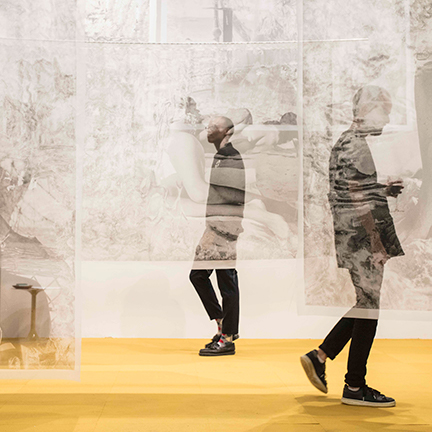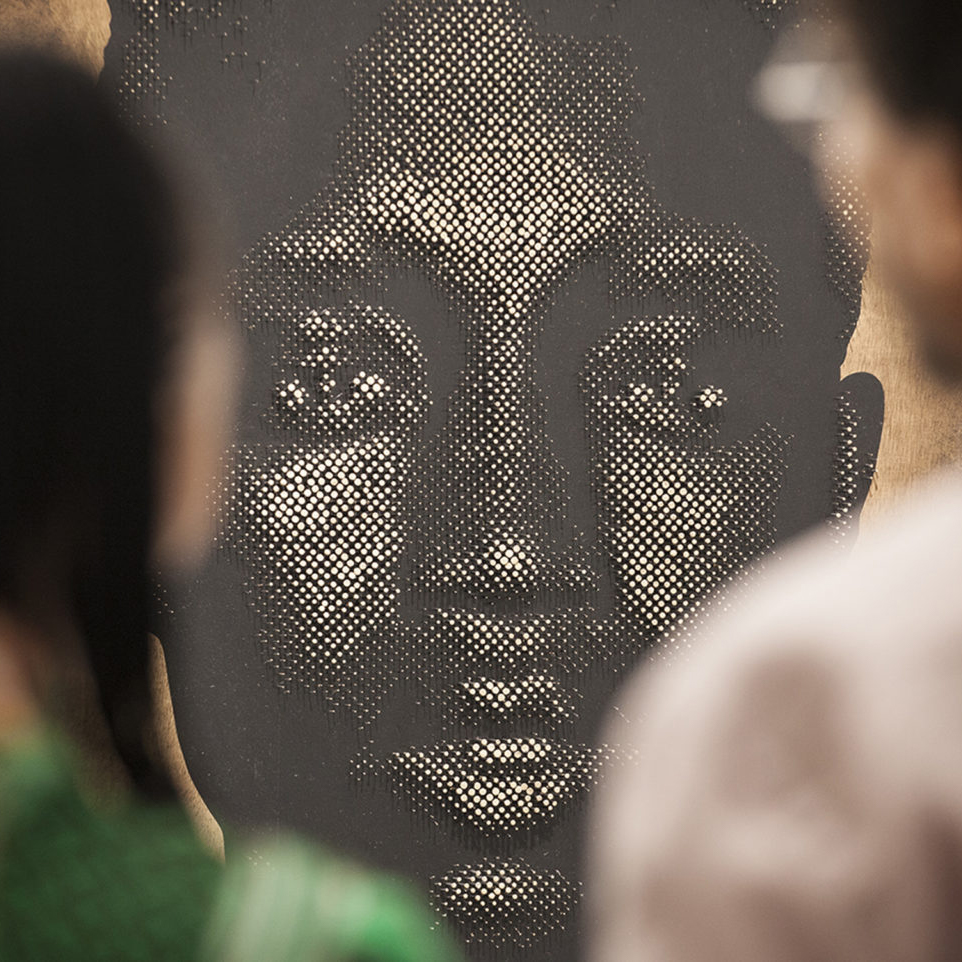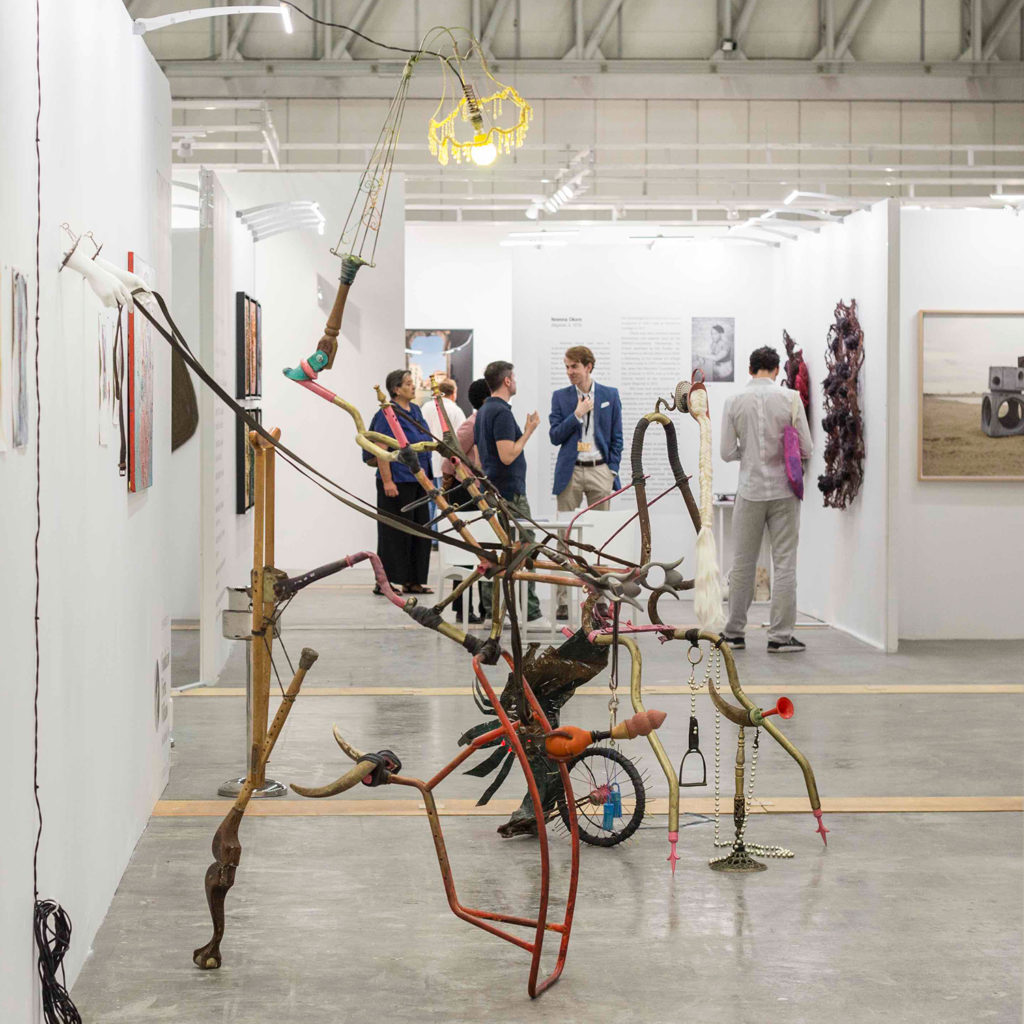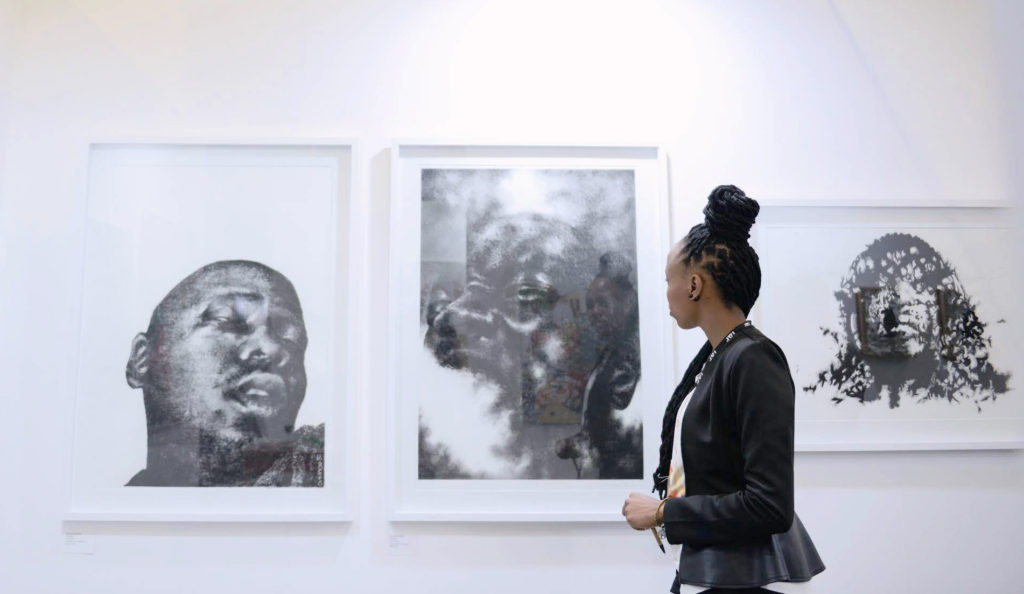

FRAMING A BOOM


Navigating the role of art fairs in a contemporary African art market
AN ARTICLE BY ELLEN AGNEW
In recent years, the international art market has woken up to the realisation that contemporary artists from the African continent are worth collecting. In part, this is due to the globalisation of the art market and the internationalisation of art. So where and how do art fairs fit into this all?
According to The Art Market – an Art Basel and UBS produced report – for 2019, art fairs have grown internationally from about 55 in the year 2000 to over 260 in 2018. Better communication, the rise of the Internet, falling prices of air travel, and the boost in local economy for host cities have all contributed to the rise in art fairs globally – where art fairs also increasingly provide an invaluable networking opportunity for all players in the market.
For contemporary artists from Africa, this means that the participation of African-based galleries in art fairs outside of the continent exposes them to collectors in various different parts of the world – increasing both visibility and interest in art from Africa. And yet, according to The Art Market, Africa’s art market – in relation to the dominant European and North American art markets – is peripheral; where “despite fairs actively seeking regional diversification, US galleries still accounted for the largest share at 18%, while galleries from the four largest art markets in Europe (the UK, France, Germany and Italy) made up a further 35%.”


2019 INVESTEC CAPE TOWN ART FAIR. IMAGE BY EMILIE GAMBADE FROM MAVERICK LIFE 

2020 INVESTEC CAPE TOWN ART FAIR. IMAGE BY NINA LIESKA
Touria El Glaoui – Founding Director of 1-54 Contemporary African Art Fair – agrees. “The figures of African artists at these fairs are still dismal – for example, at FIAC 2019, I believe only 4% of the artists featured were from Africa or the diaspora.” El Glaoui goes on to say that “if one were to look at sales figures, one could discern a steep rise, but not a boom. To give a more realistic picture that is rarely spoken of, statistics show that the global share of auction sales of work by artists from Africa is still only roughly equal to that of Romanian artists.”
As off-putting as these statistics may seem, El Glaoui looks on them positively. “This figure, although many find discouraging, I actually find is promising and demonstrative of the potential that art markets across the continent hold.”
For Mary Corrigall, South African art consultant and art market specialist, “We need to frame a boom in African art from an African perspective – not a western one. In the context of the developments in Africa over the last decade, we have experienced a boom. Take South Africa, our commercial art sector, from 2007 to 2020: we’ve seen the number of galleries double (although nine have since closed), four art fairs emerge, and a secondary market for contemporary art become established. Add that to the number of new museums, art foundations and flurry of art advisors, and you sort-of have a boom going.”


With the steady emergence of international art fairs dedicated specifically to contemporary art from Africa – such as 1-54 Contemporary African Art Fair, AKAA, LATITUDES and, by proxy, the Investec Cape Town Art Fair and FNB Art Joburg – the international art market can feed its understanding that contemporary artists from the African continent are worth collecting – regardless of whether or not the rise in interest marks a boom.
The drive in collecting the work of contemporary African artists is also considered to be fed through the participation of top and second tier South African galleries in high profile art fairs – such as Art Basel and Frieze; where South African artists, specifically, are placed front and centre. And not only do art fairs support galleries and, in turn, their stable of artists; they make an important economic contribution to the cities that host them. “These events bring large volumes of affluent visitors with considerable spending power, providing a positive financial injection not just into the fair and its exhibitors, but also across a range of other businesses, such as hotels, travel, restaurants, and other services”, writes Clare McAndrew in The Art Market.
Corrigall states that the expansion of art capitals around the continent has been tied to Africa’s participation in the global art market, meaning that “the African galleries are no longer dependent on local buyers – who are thin on the ground”. Corrigall goes on to say that the rise in international interest in contemporary artists from Africa can also be put down to “an acknowledgment in western art institutions that the western-centric white male canon is no longer the only one”.


2020 STELLENBOSCH TRIENNALE. IMAGE FROM HOSPITALITY HEDONIST 

2020 STELLENBOSCH TRIENNALE. IMAGE BY KENT ANDREASEN FROM THE NEW YORK TIMES.
Yet for El Glaoui, who has just pulled-off the third successful edition of 1-54 Marrakech, international art fairs intended for contemporary art from Africa and its steadily growing following require both dedicated international and local collectors – who are principal in ensuring a more stable market without reliance on a particular demographic.
“At present there are higher numbers of international buyers, however, we are trying to balance this out. For example – from bringing the fair to art markets on the continent, to ensuring there are works at all price points to give less established or experienced collectors the opportunity to enter this market.”
“From an economic and political perspective, I think we are yet to do the rigorous cultural exchange,” says Khanyisile Mbongwa, Chief Curator of the inaugural Stellenbosch Triennale – who also believes that more can be done to balance the collecting field. “Art Fairs at home can begin to find more diverse ways to cultivate local collectors by introducing a collecting culture or strategy that is accessible to the working class. There’s a potential for a local art market, but we have to find the strategies that accommodate the realities of the geographical location.”
“Of course we want the market to grow and for work from Africa and the diaspora to be fetching prices equal to contemporary work from European or American artists. However, these figures are not our priority,” say El Glaoui. “ The priority is to ensure that a ‘boom’ does not occur, but that there is rather a steady rise in prices in line with the growth in other areas of the arts ecosystem – such as galleries, spaces of artist education and support from private and state cultural institutions – all to ensure the market is stable and reliable for everyone, including collectors.”




